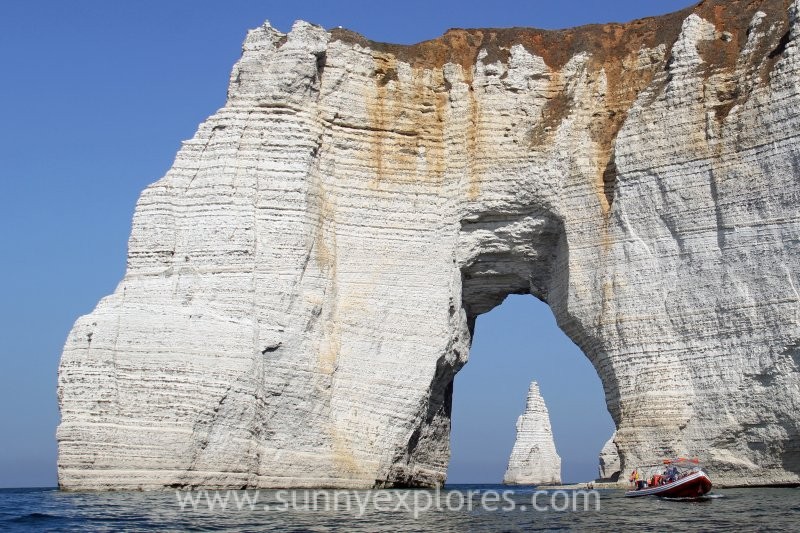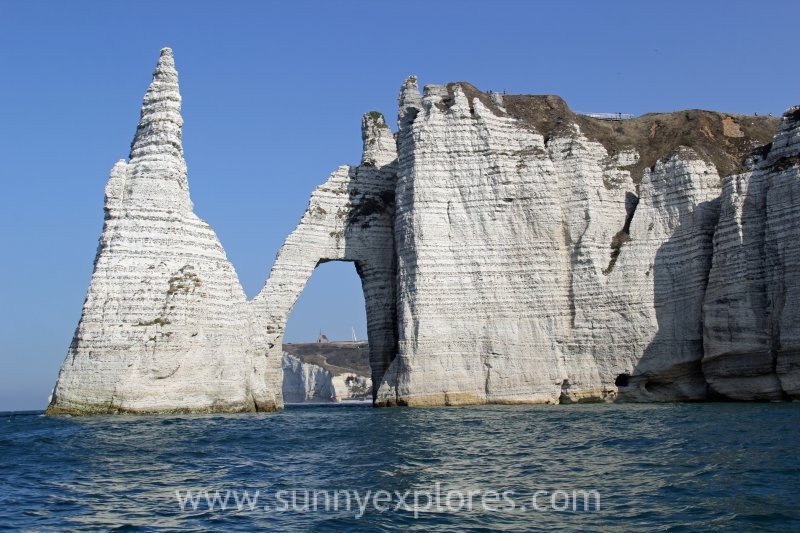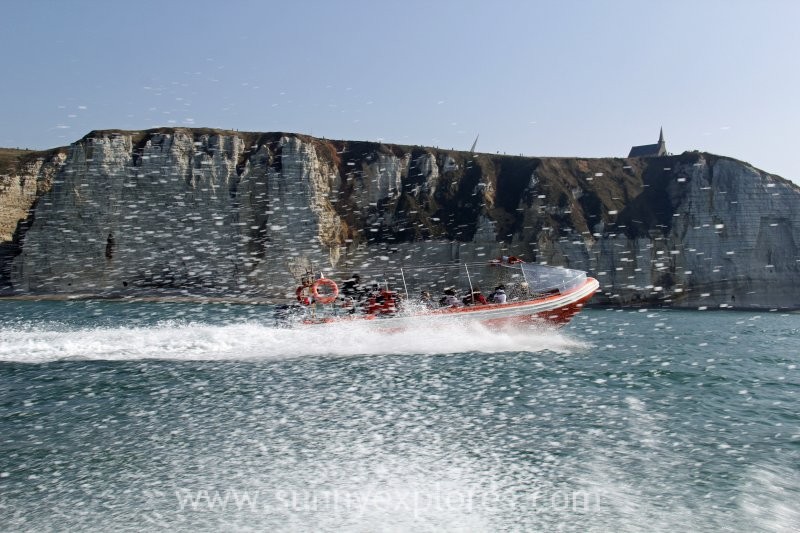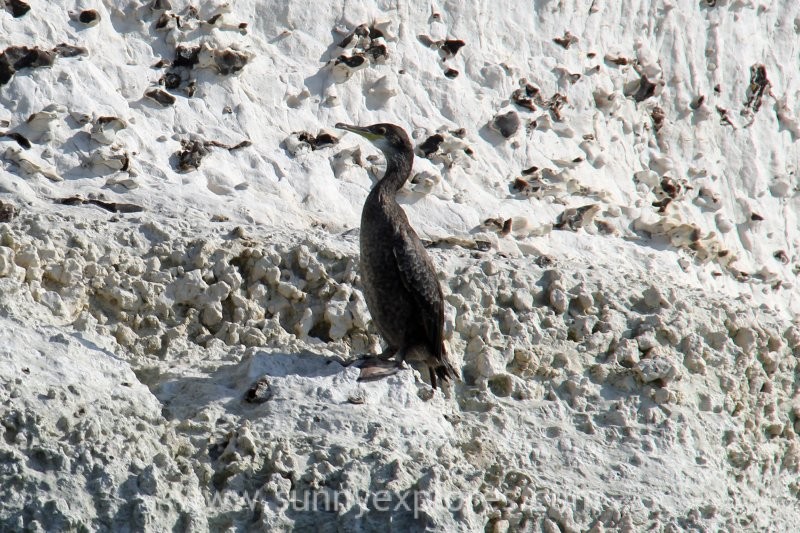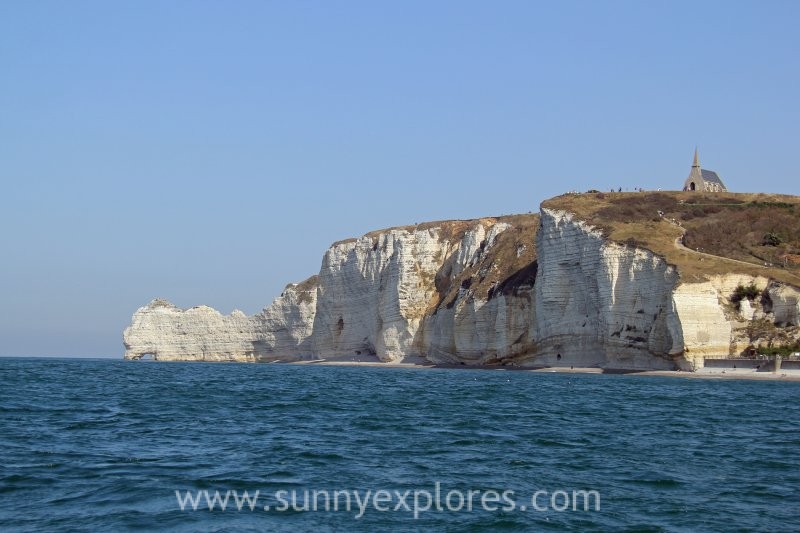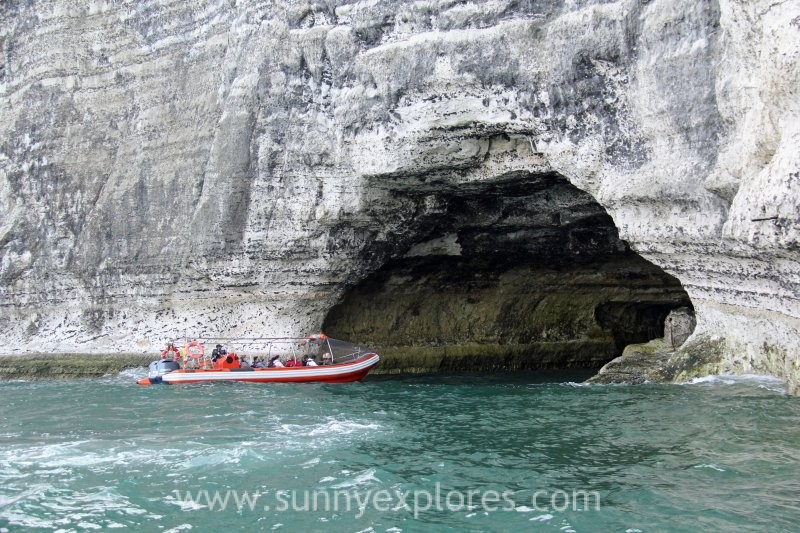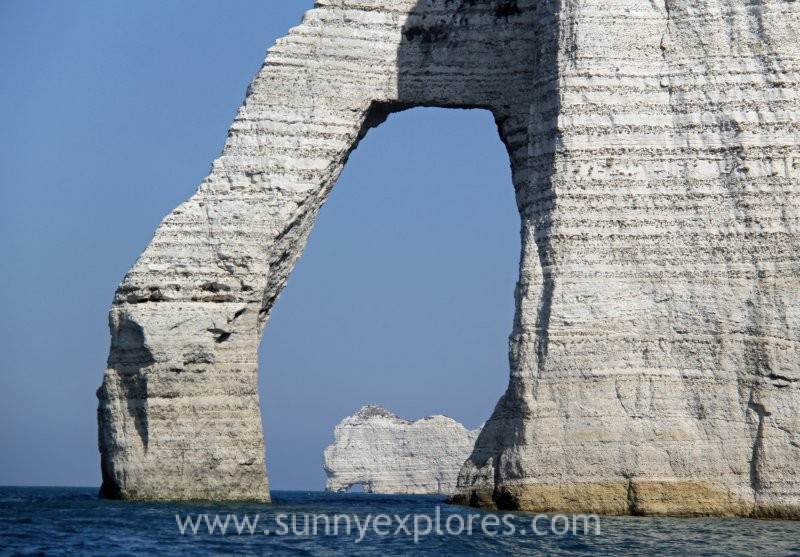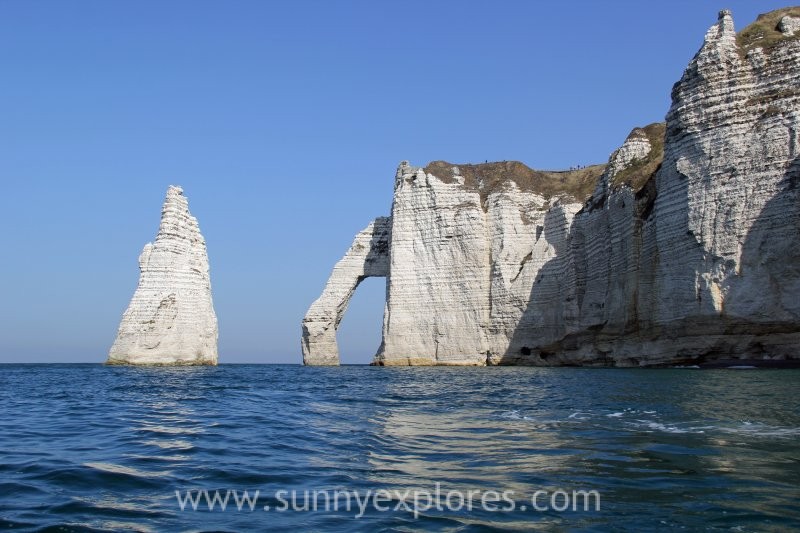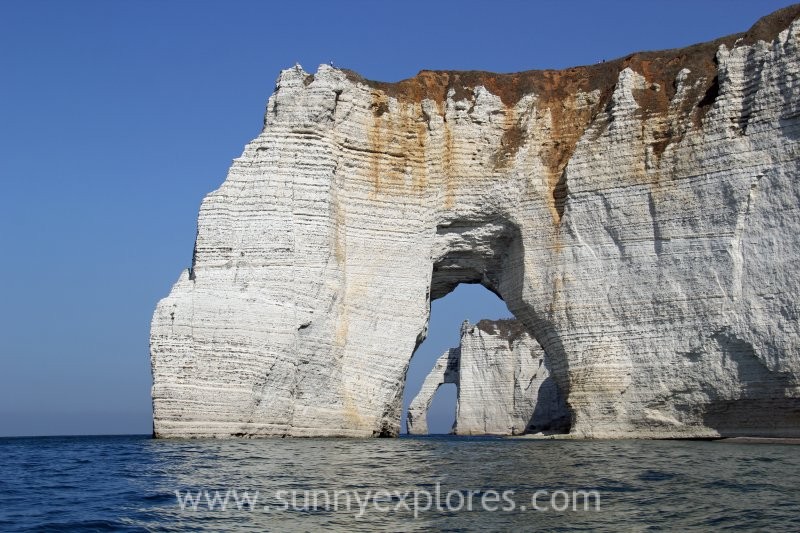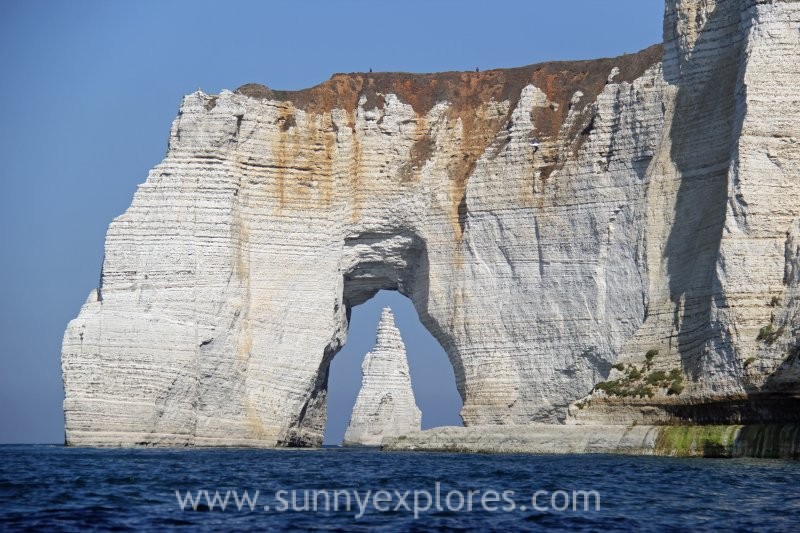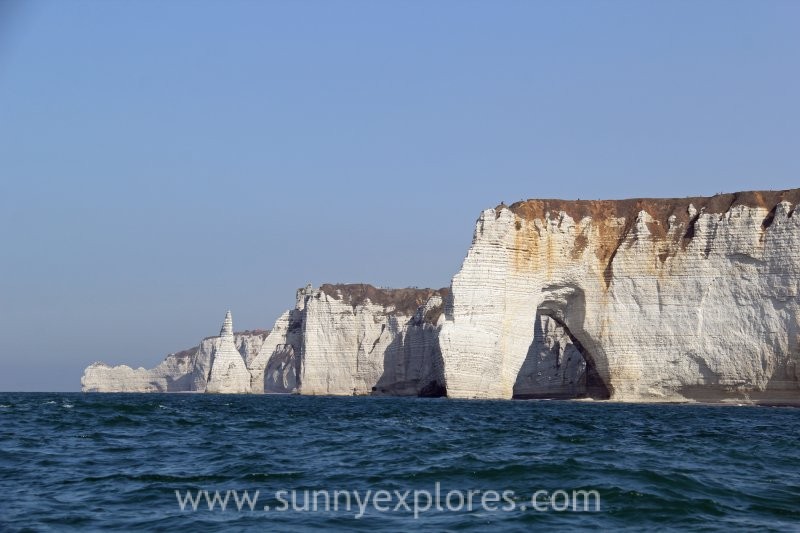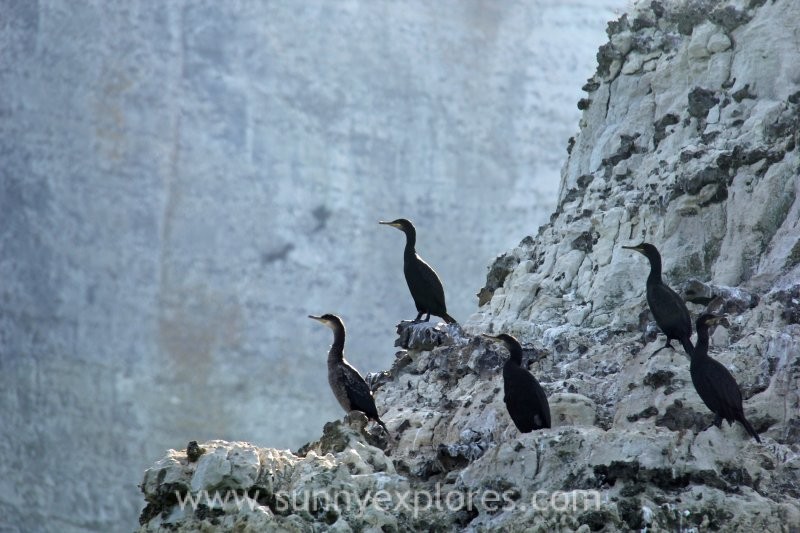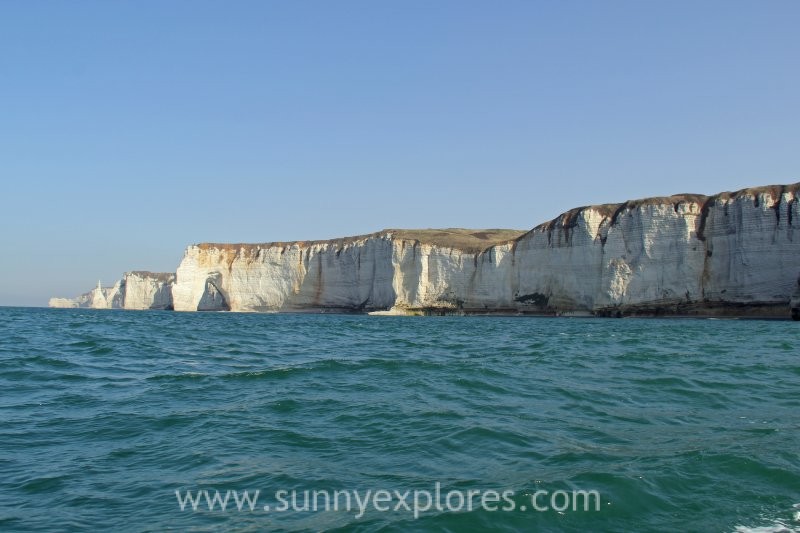The cliffs of Etretat from the water
October 21, 2020
We have all seen the famous the cliffs of Étretat in Normandy France on Claude Monets beautiful paintings. The Côte d’Albâtre is also beautiful in reality: a clear blue sea where the white cliffs stand out majestically. The Côte d’Albâtre, the Alabaster Coast, is part of the French coast of the English Channel. It takes its name from the white hue of its high chalk cliffs, including those of Étretat, which stretch for over 120 kilometers, dominating most of the coastline. The Côte d’Albâtre is part of the same geological system as the White Cliffs of Dover on the far side of the English Channel.
The most famous are the arches of Étretat. The three natural arches were originally formed by an underground river running parallel to the current coastline. Throughout history, the sea has further enlarged the arches. From the beach and promenade in Étretat, the white cliffs and two natural arches can be seen. The third and largest arch is not directly visible from the city. In the southwest you will find the Falaise d’Aval and L’Aiguille (the needle). In the northeast you can see the Falaise d’Amont. A path leads over the rocks and hiking here means enjoying beautiful views of the sea. In the past, the customs officers used this path on the rocks between Étretat and Fécamp to track down smugglers trying to get around Napoleon’s blockade of the continent. Now the douaniers path is a challenging walking route with amazing views. The cliffs of Étretat are beautiful from land, but even more impressive to see from a small boat out at sea, so that is what I did. I embarked on a ribboat to see the magnificent cliffs from the seaside. Here is a photo impression!
